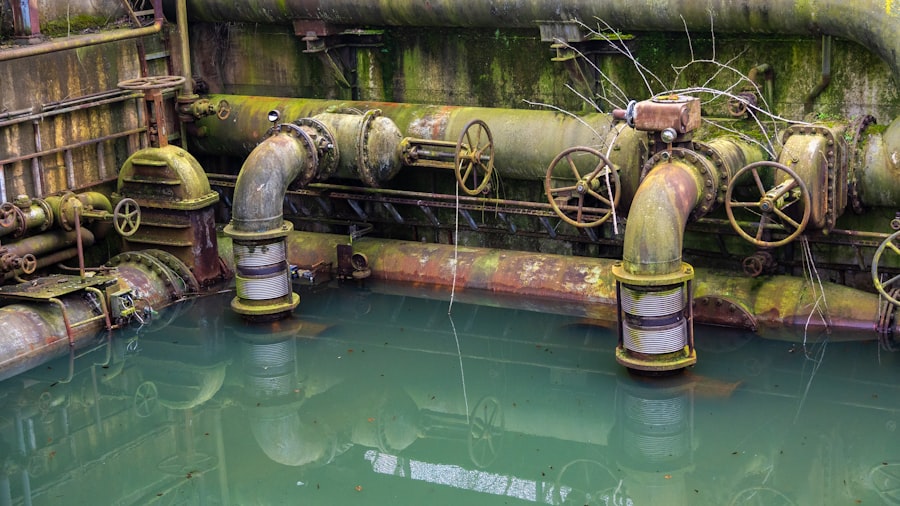The history of submarine propulsion is a fascinating journey that dates back to the early 17th century. The first recorded design of a submarine was conceived by Dutch inventor Cornelis Drebbel, who built a vessel that could navigate underwater using oars. This rudimentary design marked the beginning of mankind’s quest to explore the depths of the oceans.
Drebbel’s submarine, which was powered by human effort, demonstrated the potential for underwater travel, albeit with significant limitations. The vessel could only operate at shallow depths and for short durations, but it laid the groundwork for future innovations in submarine technology. As the centuries progressed, various inventors attempted to improve upon Drebbel’s design.
In the 19th century, the advent of steam power introduced a new era for submarine propulsion. The American Civil War saw the introduction of the Confederate submarine H.L. Hunley, which was powered by a hand-cranked mechanism.
Although it was a significant advancement, the Hunley tragically sank during its first successful attack. Nevertheless, these early experiments with steam and manual propulsion set the stage for more sophisticated designs that would emerge in the following decades.
Key Takeaways
- Submarine propulsion has come a long way since its early days, with human-powered and steam-powered submarines paving the way for modern technology.
- Diesel-electric propulsion played a crucial role in the development of submarines, offering a balance of power and stealth for underwater operations.
- The introduction of nuclear power revolutionized submarine propulsion, providing unmatched endurance and speed for long-range missions.
- Alternative propulsion methods such as air-independent propulsion and fuel cells are being explored to enhance the capabilities of submarines.
- Challenges in submarine propulsion, including noise reduction and environmental impact, are driving innovations in propulsion systems for future submarines.
The Evolution of Submarine Propulsion Technology
The evolution of submarine propulsion technology has been marked by a series of groundbreaking innovations that have transformed how submarines operate. The transition from manual and steam-powered systems to more advanced technologies began in the late 19th and early 20th centuries. The introduction of electric motors in submarines represented a significant leap forward.
Electric propulsion allowed submarines to operate more quietly and efficiently, making them less detectable to enemy forces. This shift was particularly important during World War I, as naval warfare increasingly relied on stealth and surprise. By the interwar period, advancements in battery technology further enhanced electric propulsion systems.
Submarines could now remain submerged for longer periods, thanks to improved battery life and efficiency. The combination of diesel engines for surface travel and electric motors for submerged operations became the standard for many naval fleets around the world. This dual-propulsion system allowed submarines to maximize their operational capabilities while minimizing their vulnerability to detection.
The Role of Diesel-Electric Propulsion in Submarines

Diesel-electric propulsion became the backbone of submarine technology during the mid-20th century, particularly during World War
The effectiveness of diesel-electric submarines was demonstrated in numerous naval engagements during the war. Their ability to remain submerged for extended periods while maintaining a relatively low profile made them formidable adversaries. However, as naval warfare evolved, so too did the need for submarines to operate more independently and for longer durations without surfacing.
This demand ultimately paved the way for the next major leap in submarine propulsion technology.
Nuclear Power: Revolutionizing Submarine Propulsion
| Submarine | Propulsion System | Advantages |
|---|---|---|
| USS Nautilus | Nuclear Reactor | Unlimited Range, Reduced Noise, Longer Deployment |
| HMS Dreadnought | Nuclear Power Plant | Increased Speed, Reduced Maintenance, Enhanced Stealth |
The introduction of nuclear power in submarines during the 1950s marked a revolutionary shift in naval warfare capabilities. The USS Nautilus, launched in 1954, was the world’s first nuclear-powered submarine, and it showcased the immense potential of this new propulsion method. Nuclear reactors provided submarines with virtually unlimited range and endurance, allowing them to remain submerged for months at a time without needing to surface for fuel.
Nuclear-powered submarines also offered significant advantages in terms of speed and operational flexibility. They could travel at much higher speeds than their diesel-electric counterparts, making them capable of rapid response in times of conflict. Additionally, the reduced need for surface travel meant that these submarines could operate with greater stealth, evading detection by enemy forces.
The strategic implications of nuclear-powered submarines were profound, as they became essential components of national defense strategies during the Cold War.
Alternative Propulsion Methods for Submarines
While nuclear power has dominated submarine propulsion for decades, researchers and engineers have explored alternative methods to enhance performance and reduce environmental impact. One such method is air-independent propulsion (AIP), which allows submarines to operate underwater without surfacing or relying on battery power alone. AIP systems utilize various technologies, including fuel cells and Stirling engines, to generate power while submerged.
These alternative propulsion methods offer several advantages over traditional systems. AIP-equipped submarines can remain submerged for extended periods without surfacing, making them even harder to detect. This capability is particularly valuable in modern naval warfare, where stealth is paramount.
Additionally, advancements in renewable energy technologies are being explored as potential future solutions for submarine propulsion, aiming to reduce reliance on fossil fuels and minimize environmental impact.
Challenges and Innovations in Submarine Propulsion

Despite significant advancements in submarine propulsion technology, challenges remain that require ongoing innovation and adaptation. One major challenge is the need for improved energy efficiency and reduced emissions from conventional diesel-electric systems. As environmental concerns grow, navies around the world are under pressure to develop greener technologies that minimize their ecological footprint while maintaining operational effectiveness.
Another challenge lies in enhancing the safety and reliability of nuclear-powered submarines. While nuclear propulsion offers numerous advantages, it also presents unique risks associated with reactor operation and waste management. Ongoing research focuses on developing safer reactor designs and improving waste disposal methods to address these concerns while ensuring that nuclear submarines remain a viable option for national defense.
The Environmental Impact of Submarine Propulsion
The environmental impact of submarine propulsion is an increasingly important consideration as global awareness of ecological issues rises. Diesel-electric submarines produce emissions that can contribute to air pollution when operating on the surface, raising concerns about their environmental footprint. Additionally, the potential risks associated with nuclear-powered submarines—such as radioactive waste disposal—pose significant challenges that must be addressed.
Efforts are underway to mitigate these impacts through technological advancements and regulatory measures. For instance, some navies are exploring hybrid propulsion systems that combine traditional diesel engines with renewable energy sources like solar or wind power. These innovations aim to reduce emissions while maintaining operational capabilities.
Furthermore, international agreements and regulations are being developed to ensure responsible management of nuclear materials and waste associated with submarine operations.
Advancements in Submarine Propulsion Systems
Recent advancements in submarine propulsion systems have focused on enhancing performance, efficiency, and stealth capabilities. One notable development is the integration of advanced materials and design techniques that reduce noise levels generated by submarines during operation. Quieter submarines are harder to detect by enemy sonar systems, providing a strategic advantage in naval engagements.
Additionally, improvements in battery technology have led to more efficient energy storage solutions for electric propulsion systems.
These advancements not only enhance operational capabilities but also contribute to overall mission success in modern naval warfare.
The Future of Submarine Propulsion: Trends and Developments
Looking ahead, the future of submarine propulsion is likely to be shaped by several key trends and developments. One prominent trend is the increasing focus on automation and artificial intelligence (AI) in submarine operations. As technology continues to advance, AI-driven systems may play a crucial role in optimizing propulsion efficiency and enhancing decision-making processes during missions.
Moreover, ongoing research into alternative energy sources—such as hydrogen fuel cells—could revolutionize submarine propulsion by providing cleaner and more sustainable options for underwater travel. These innovations may not only improve operational capabilities but also align with global efforts to reduce carbon emissions and combat climate change.
The Secret History of Submarine Propulsion Unveiled
The history of submarine propulsion is often shrouded in secrecy due to its military applications and strategic importance. Many early developments were classified or kept under wraps to protect national security interests. However, as declassified documents and historical research have emerged over time, a clearer picture has begun to form regarding the evolution of submarine technology.
From Drebbel’s early designs to modern nuclear-powered vessels, each step in this journey has been marked by ingenuity and determination. The contributions of countless inventors and engineers have shaped the course of naval history, revealing a rich tapestry of innovation that continues to evolve today.
The Importance of Submarine Propulsion in Modern Naval Warfare
In modern naval warfare, submarine propulsion plays a critical role in shaping strategic capabilities and operational effectiveness. Submarines equipped with advanced propulsion systems can conduct covert operations, gather intelligence, and engage enemy forces with precision strikes—all while remaining undetected beneath the waves. As geopolitical tensions continue to rise globally, the importance of effective submarine propulsion cannot be overstated.
Nations invest heavily in developing cutting-edge technologies that enhance their underwater fleets’ capabilities, ensuring they remain competitive in an ever-evolving landscape of maritime warfare. Ultimately, advancements in submarine propulsion will continue to influence naval strategies and shape the future of global security dynamics.
In exploring the hidden history of submarine propulsion, it’s fascinating to consider the technological advancements that have shaped naval warfare over the years. A related article that delves into the intricacies of military technology and its evolution can be found on the website “In The War Room.” This article provides a broader context to the development of submarine propulsion by examining various military innovations. For more insights, you can read the article by visiting In The War Room.
WATCH THIS! America’s Nuclear Navy Was Born From Espionage
FAQs
What is the history of submarine propulsion?
Submarine propulsion has a long history, dating back to the 17th century when the first attempts at creating a submersible vessel were made. Over time, various propulsion methods have been developed and utilized, including human-powered, steam-powered, diesel-electric, and nuclear propulsion.
What are the different types of submarine propulsion?
The main types of submarine propulsion include diesel-electric, nuclear, and air-independent propulsion (AIP). Diesel-electric submarines use diesel engines on the surface and electric batteries when submerged. Nuclear submarines are powered by nuclear reactors, providing them with virtually unlimited range and endurance. AIP submarines use a non-nuclear power source, such as fuel cells, to extend their submerged endurance.
How has submarine propulsion technology evolved over time?
Submarine propulsion technology has evolved significantly over time, with advancements in power sources, propulsion systems, and stealth capabilities. Early submarines relied on human or animal power, then transitioned to steam engines, diesel engines, and eventually nuclear reactors. Modern advancements in AIP technology have also improved the stealth and endurance of submarines.
What role does propulsion play in the effectiveness of submarines?
Propulsion is a critical factor in the effectiveness of submarines, as it directly impacts their speed, range, endurance, and stealth capabilities. The type of propulsion system used can also affect a submarine’s ability to operate covertly and remain undetected by enemy forces.
What are some of the challenges associated with submarine propulsion?
Challenges associated with submarine propulsion include the need for efficient power sources, the ability to operate quietly, and the requirement for long-endurance capabilities. Additionally, the development of advanced propulsion systems often requires significant investment in research and development.




